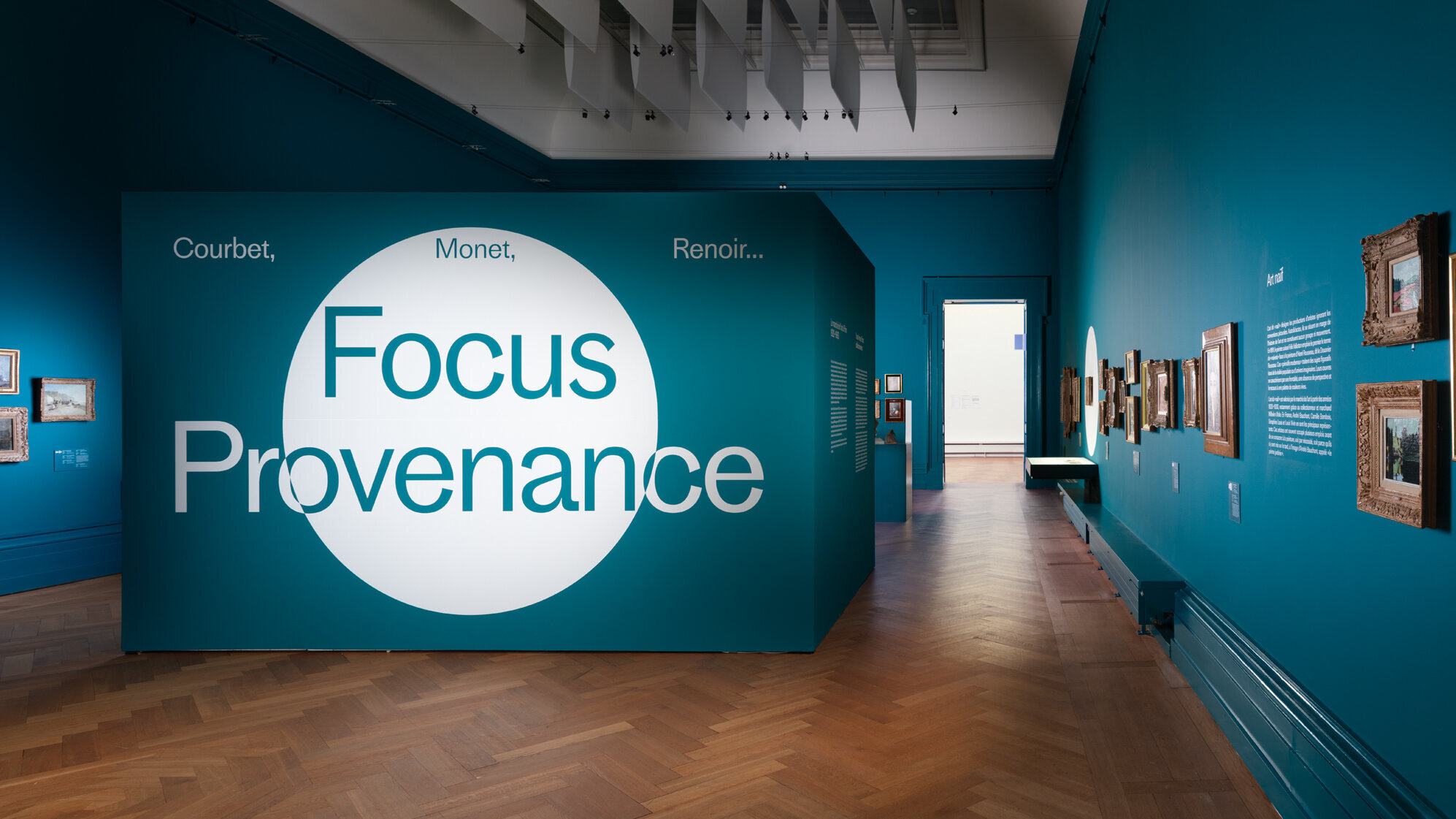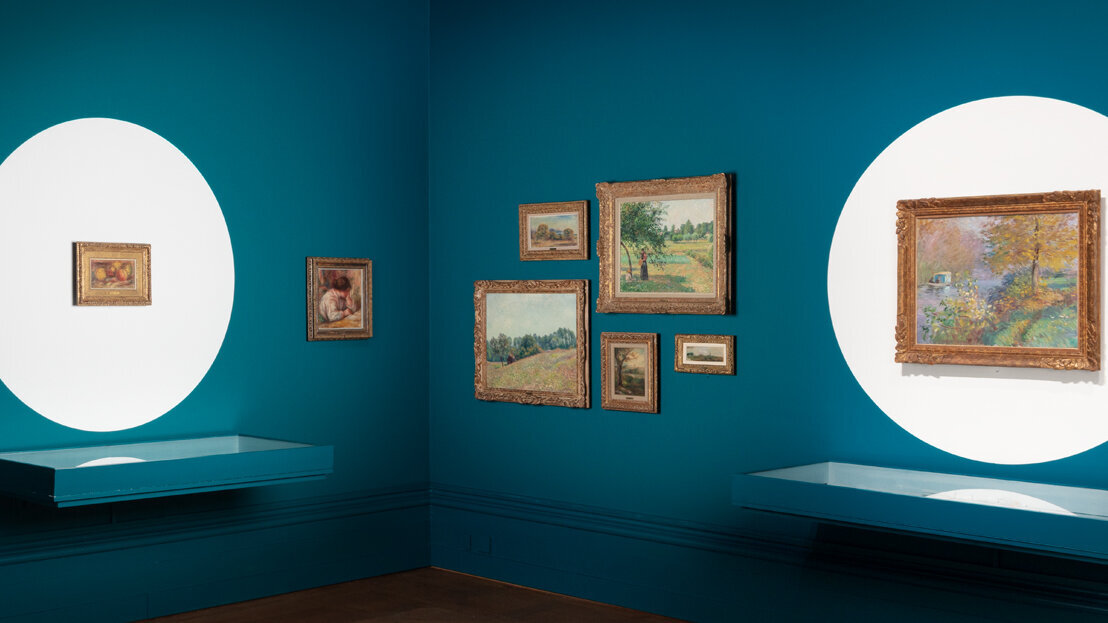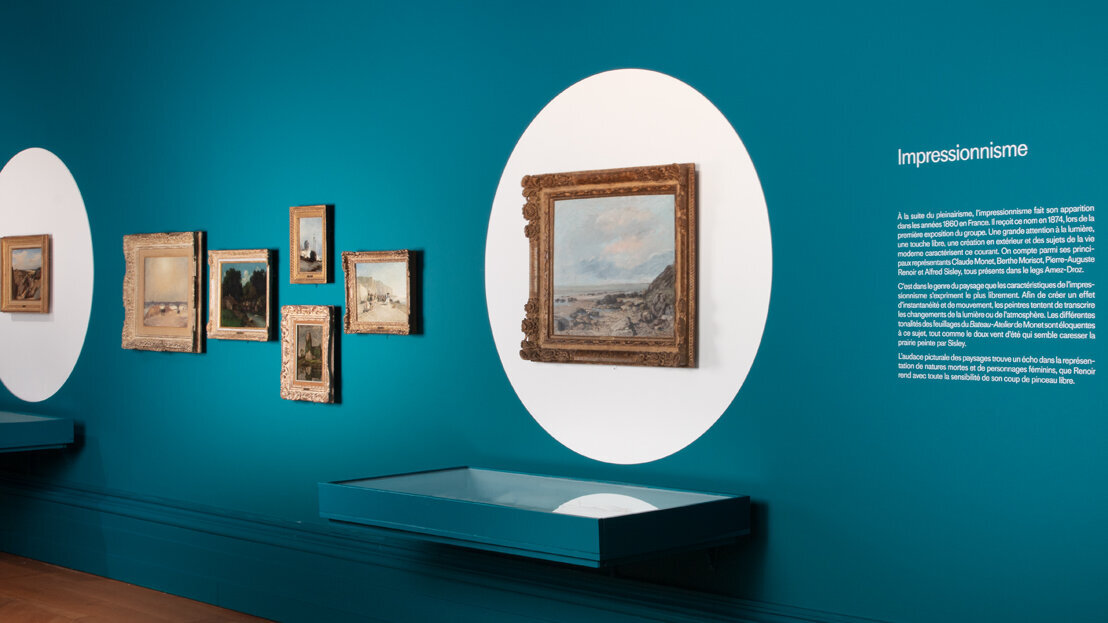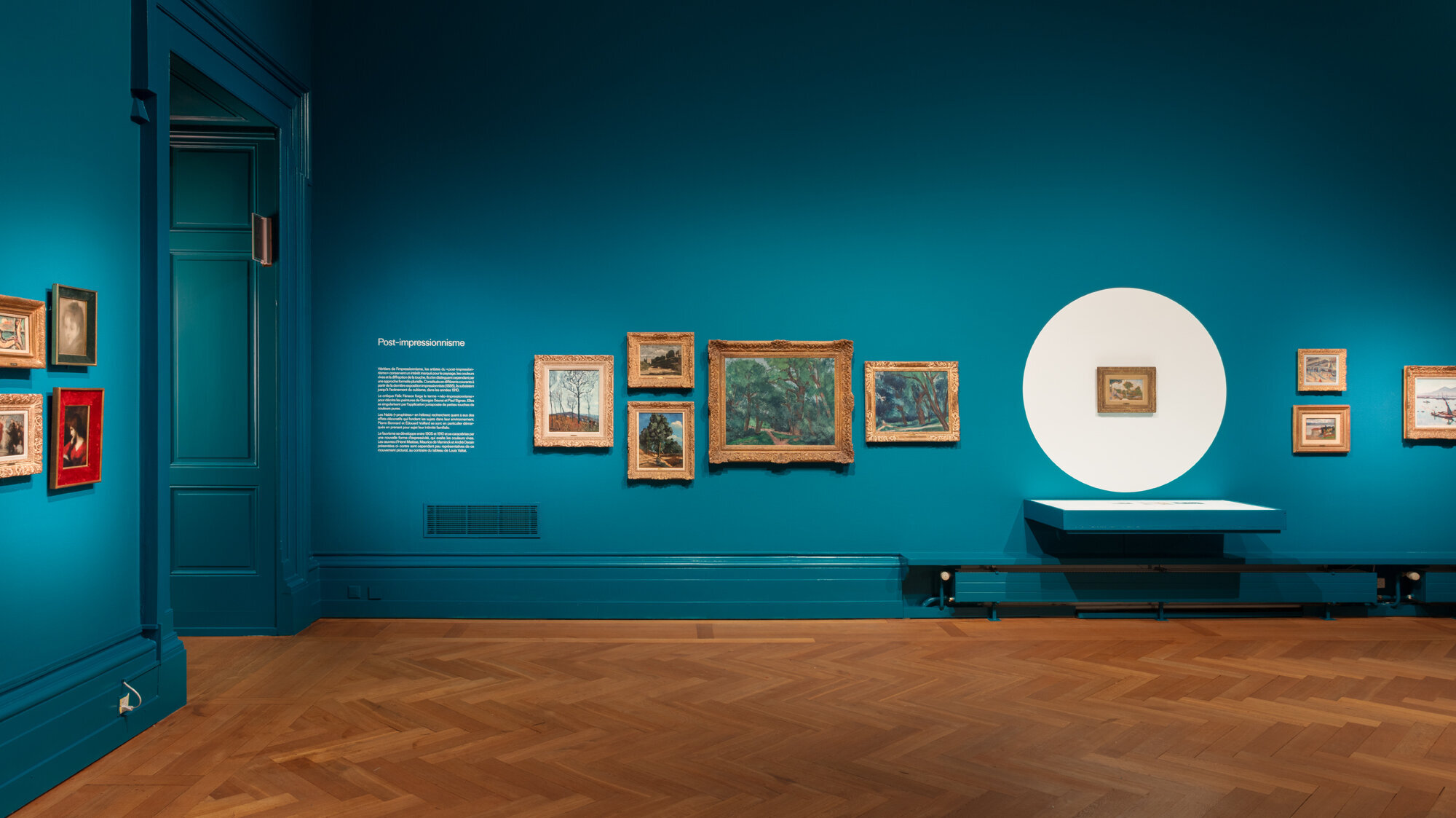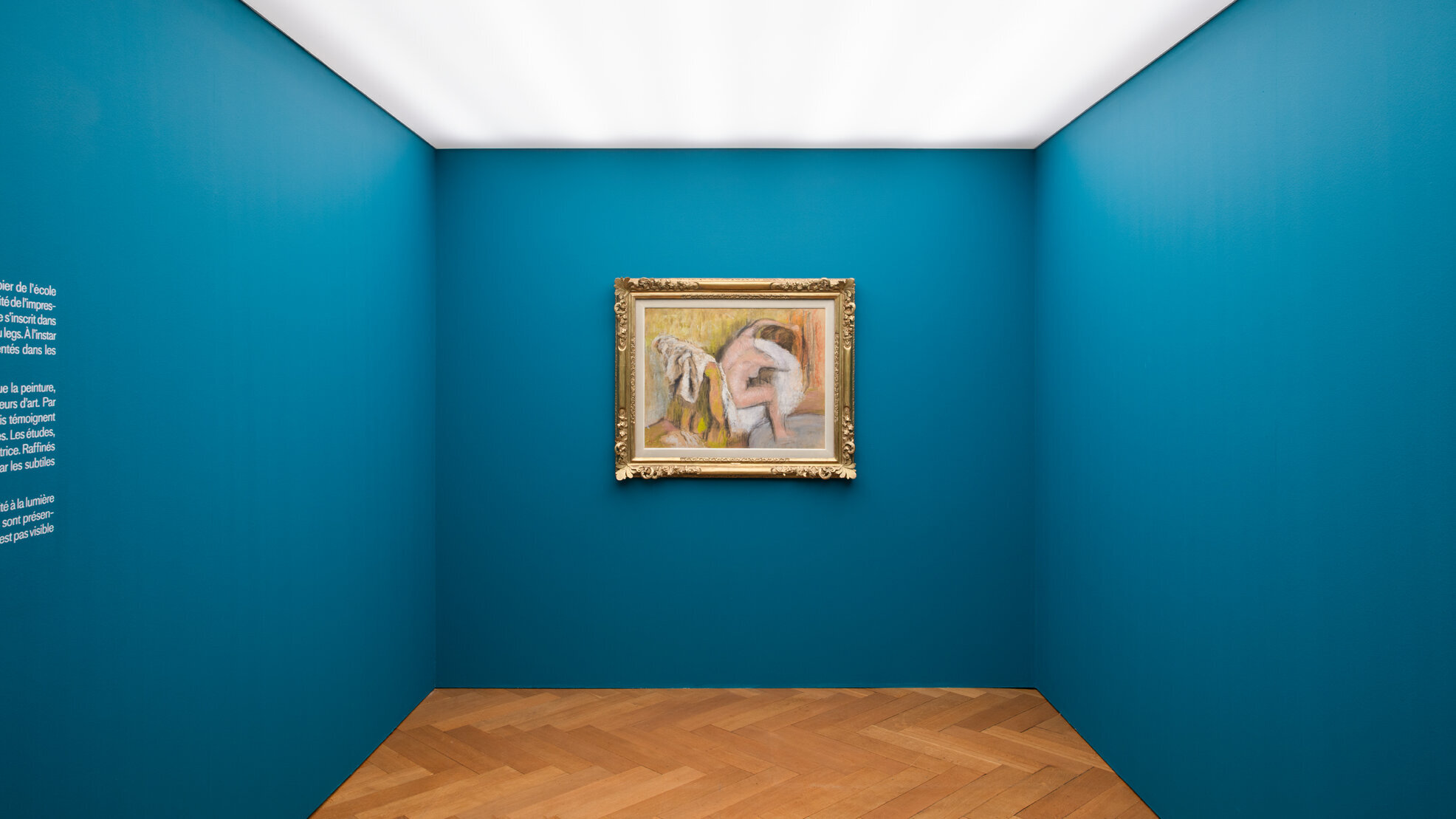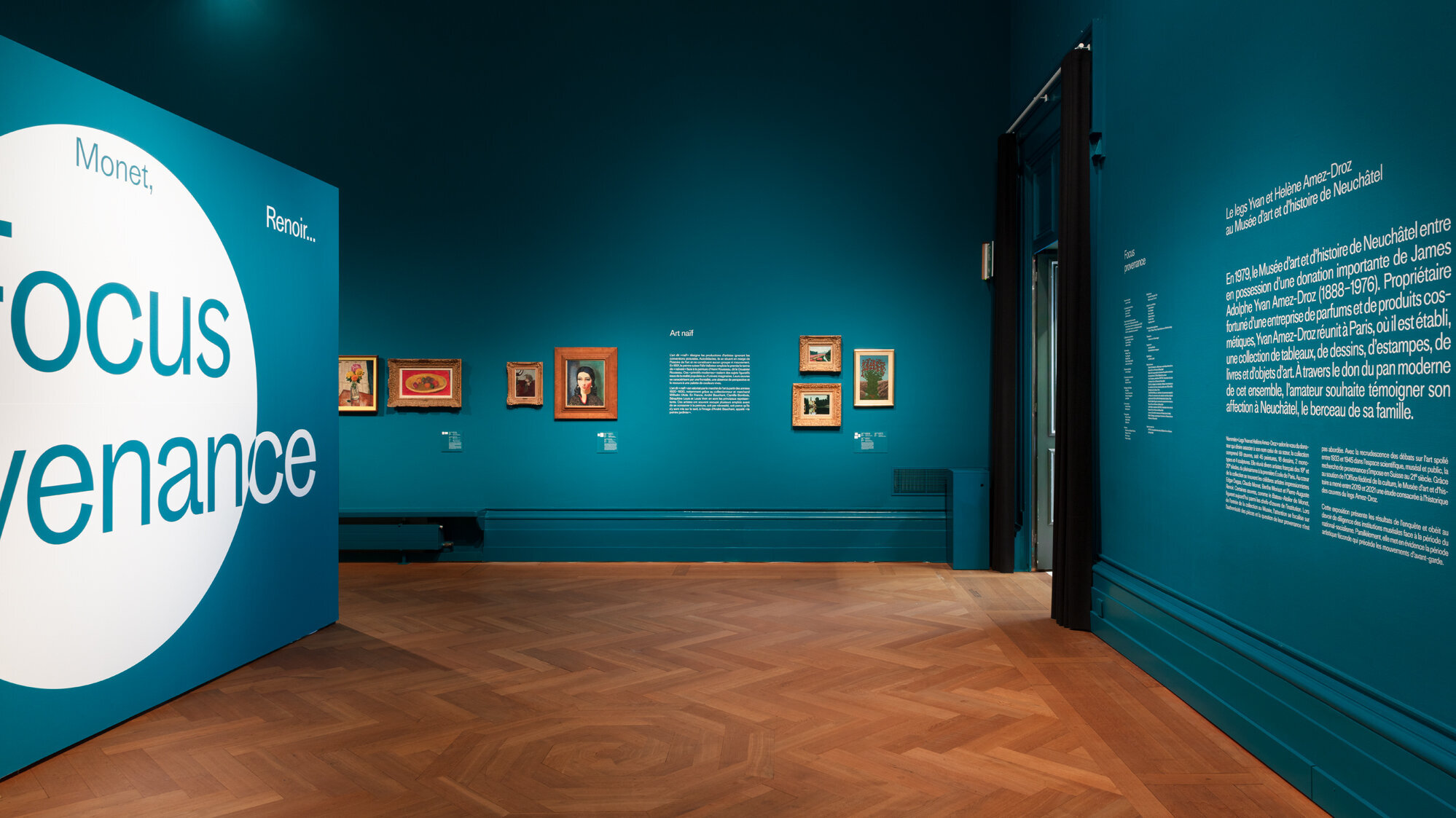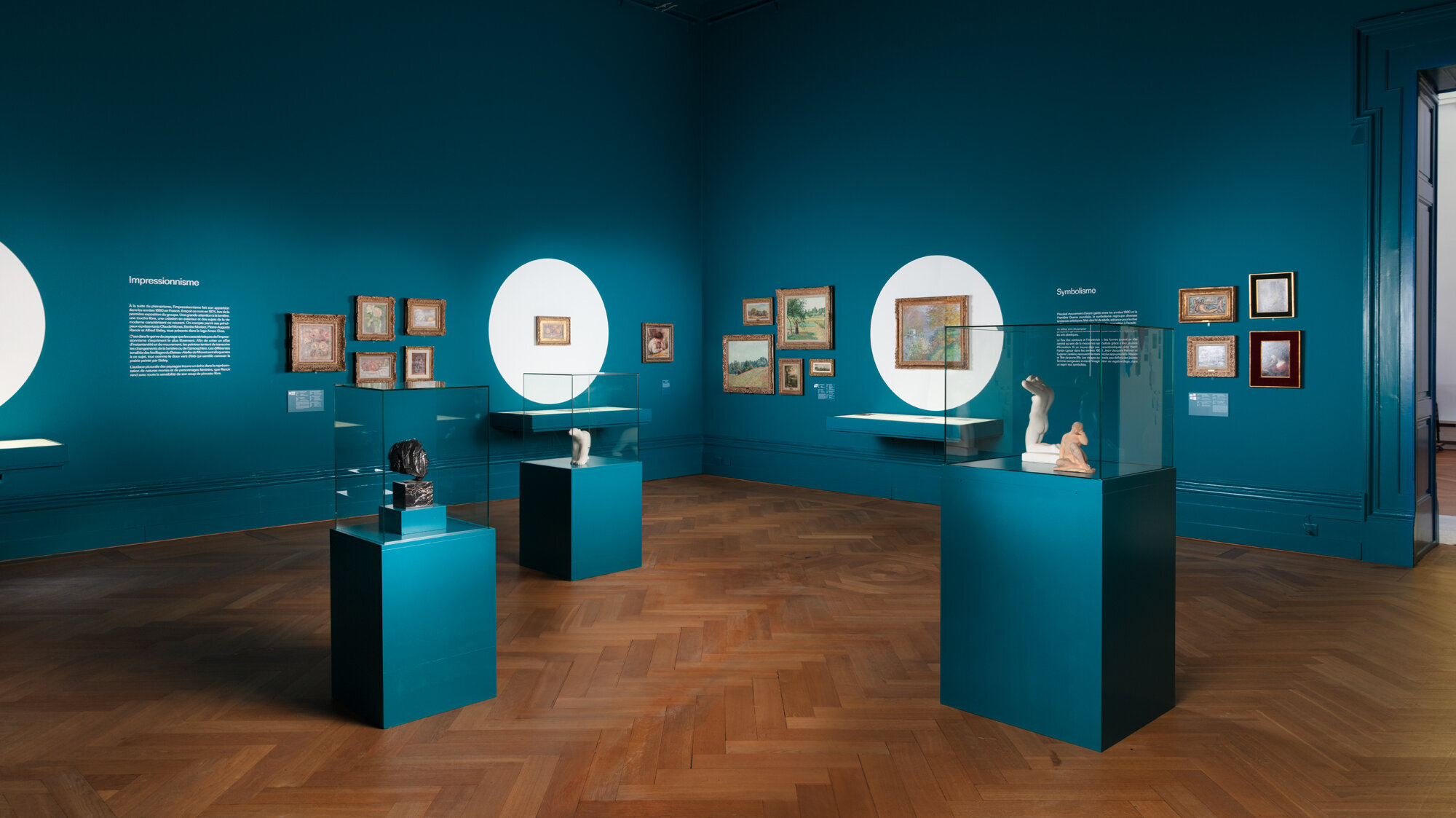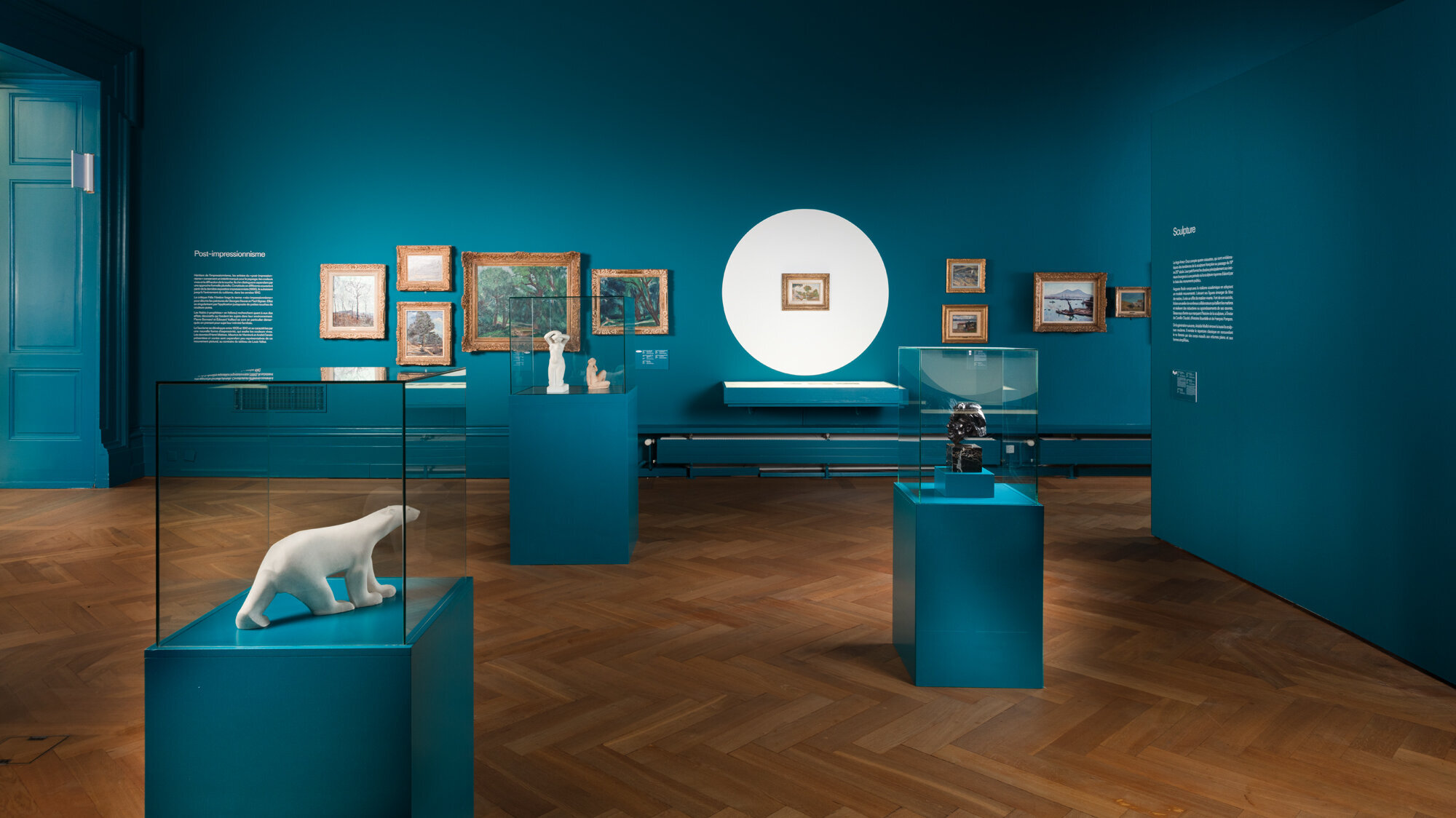Courbet, Monet, Renoir... Focus provenance
The Yvan and Hélène Amez-Droz Bequest - Permanent exhibition
In 1979, the Neuchâtel Museum of Art and History came into possession of a major donation from James Adolphe Yvan Amez-Droz (1888-1976). Wealthy owner of a perfume and cosmetics company, Yvan Amez-Droz built up a collection of paintings, drawings, prints, books and objets d'art in Paris, where he was based. By donating the modern part of this collection, the art lover wishes to show his affection for Neuchâtel, the birthplace of his family.
Named "The Yvan and Hélène Amez-Droz Bequest" in accordance with the wishes of the donor, who wants to associate his name with that of his sister, the collection comprises 69 works: 45 paintings, 18 drawings, 2 monotypes and 4 sculptures. It brings together a range of French artists from the nineteenth and twentieth centuries, from open air painting to the early École de Paris. At the heart of the collection are the famous Impressionist artists Edgar Degas, Claude Monet, Berthe Morisot and Auguste Renoir. Certain works, such as Monet's Bateau-Atelier, are now among the institution's masterpieces.
When the collection entered the Museum, attention focused on the authenticity of the pieces, and the question of their provenance was not addressed. With the resurgence of debate in the scientific, museum and public arenas about the art looted between 1933 and 1945, provenance research is becoming increasingly important in 21st-century Switzerland. With the support of the Federal Office of Culture, between 2019 and 2021 the Neuchâtel Museum of Art and History will be carrying out a study into the history of the artworks in the Yvan and Hélène Amez-Droz bequest.
This exhibition presents the results of the investigation, in keeping with museum institutions' duty of caution in dealing with the period of National Socialism. At the same time, it highlights the fertile artistic period that preceded the avant-garde movements.







